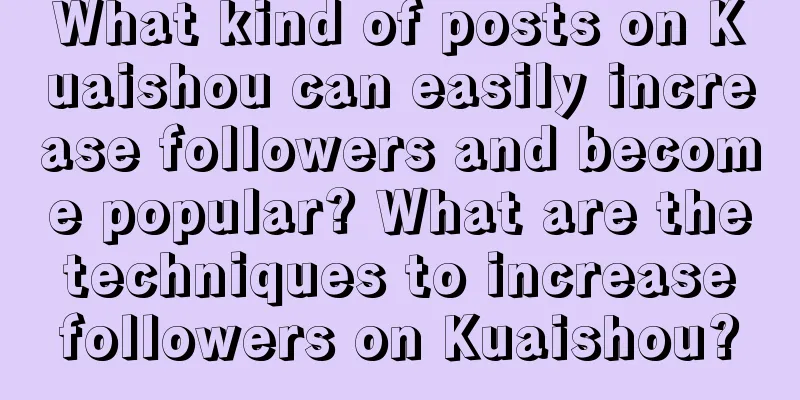Apple, Tencent, Alibaba, and Baidu are involved in the mobile AR Warring States period. Who will be the winner in the end?

|
Zuckerberg once said, "We are building the camera into the first augmented reality platform," which is the most important step yet to bring AR to the mass market. Pokémon Go gave many consumers their first taste of mobile AR, and Google Tango led the competition for high-end mobile AR phones. Facebook's AR platform has made AR popular on a variety of hardware. Apple's iPhone with AR capabilities, which will be launched this year or next, may combine with Facebook to create a large-scale mobile AR market and will be the first step to start the next major platform competition. Consumers will be the ultimate beneficiaries as usual, but this market is about to be bloody.
Platform issues The hardware and software platforms complement each other so well that it's hard to tell the difference between them, and this has served Apple well over the past decade. However, the fact that phone makers like Apple and Samsung are doing so well with hardware right now could have a negative impact on mobile AR. For example, Facebook’s AR platform has proven that major social and messaging platforms can play games using a regular smartphone camera. Therefore, when device manufacturers launch new hardware to build the installed base of AR phones, established or emerging social/messaging platforms can build a mobile AR ecosystem and user base in relatively less time and at a lower cost. They can also take advantage of this as dedicated AR phones come to market. What is Mobile AR? On the one hand, Pokémon Go has been called the "worst example of AR***" by some industry insiders because its mobile AR environment is fairly basic. Using basic computer vision and positioning technology, it can display cute sprite images on the phone screen roughly relative to the real world. Still, it did a great job of introducing mobile AR to mass consumers, and they loved it. Google Tango has chosen a different path, with hardware-based immersive mobile AR driven by integrated hardware and software. The Tango phone doesn't have a lot of cluttered technology and looks like any other smartphone, but it does have precise motion tracking, area learning, and depth perception. This excellence comes from its motion-tracking cameras, depth-sensing cameras, infrared projectors, computer vision, and simultaneous localization and mapping software, so that when virtual objects are superimposed on the real world, they look just like the real things we’re used to. However, Tango's time has yet to come because consumer awareness and the application ecosystem are not yet mature (although Google, Lenovo and Asus are trying). Facebook and Snap’s software-based immersive mobile AR is a strong contender, combining ubiquitous mobile AR environments with computer vision and SLAM that previously required specialized hardware. While Google Tango’s sensors can run larger mobile AR apps, that’s not what Facebook and Snap are solving. By connecting immersive software-based mobile AR to the world's largest consumer platform, they are working to make mobile AR available to everyone for free. Free is a good price, and China's Tencent has also smelled this business opportunity. Zuckerberg, Spiegel, and Jack Ma didn’t achieve their current success simply by luck, and the same can be said for software-based mobile AR. Celebrity Pokémon Go also points to another important factor in the mass adoption of mobile AR: demographics. 68% of Pokémon Go users are between the ages of 13 and 29. While this is dependent on many specific conditions, it is the largest sample size to date for mobile AR use. Comparative demographic observations of major consumer platforms: 88% of Americans between the ages of 18 and 29 use Facebook (two-thirds of whom use Messenger), 76% of American teens own an iPhone (81% want their next phone to be an iPhone), 75% of WeChat users are between the ages of 20 and 30, and 60% of Snapchat users are between the ages of 13 and 24. Notice a pattern? Mobile AR will be more easily accepted by young people. Mobile AR platforms targeting people aged 13 to 29 will win. Apple in my eyes Cook likes AR, but Apple's plans for AR have always been mysterious. We wrote in January that Apple might launch an iPhone with AR capabilities this year or next, and other companies such as Samsung will follow suit. But unless Cook says something more about mobile AR, we really can’t be sure what the future holds. So let’s consider this for a moment. For the past two years, we have argued that Apple is best positioned of all major tech companies to develop AR because of its end-to-end ecosystem of hardware, software, App Store, developers, and retail channels. With iMessage recently getting a new version with stickers, an AR iPhone seems like a very tempting proposition. But Apple has a problem: it itself. Apple's closed ecosystem is a huge strength, but also a weakness. Apple can offer the best and most complete experience for mobile AR, but only people who buy a new AR iPhone can experience it. Apple expects users to replace their iPhones every three years, which is the main driver of more than 200 million sales each year. But the iPhone 7/7 Plus only account for about two-thirds of the total. Assuming iPhone AR can develop a larger market to stimulate sales growth (it can convert Android users to the iOS platform and reduce the replacement cycle), we will witness iPhone AR grow from tens of thousands to hundreds of millions in just a few years. But Facebook Messenger has 1.2 billion MAUs (monthly active users), WeChat has 768 million DAUs (daily active users), Instagram has 400 million DAUs, WhatsApp Status has 175 million DAUs, and Snapchat has 160 million DAUs. That means it will take more than five years for Apple to deliver mobile AR to the same number of consumers that Facebook and Tencent have today. Anderson is still right—software is eating the world. Challenges facing Android Samsung and Huawei are the world’s largest Android phone makers (this figure takes into account China’s Oppo and Vivo), and both companies are well-positioned to develop hardware-based mobile AR markets to enable the larger Android ecosystem. But Samsung's S8 and Huawei's P10 don't support AR, nor do they integrate Tango or their own AR platforms. As discussed in January, we see 2018 as a possible turning point for mobile AR on Android hardware. In addition, the Android ecosystem also faces challenges, with Google Play dominating outside of China and the app store market in China constantly changing. In other words, no Android hardware manufacturer has the potential to dominate the end-to-end mobile AR market like Apple. Fearless Sun Tzu said: "Thus, the victorious army first wins the battle and then goes to war." Zuckerberg adopted this idea when he launched the mobile A platform at the F8 Developer Conference. Facebook’s mobile AR platform has been successful outside of China. Its user base, platforms (Messenger, Instagram, WhatsApp Status), developer ecosystem, mobile AR developer tools, mobile market experience, and financial resources all guarantee its success. Plus Zuckerberg needs to justify his decision to spend $3 billion (about RMB) to enter the VR/AR market (even though the money was to buy a VR company). This is a very smart move, and it will pay off. It will take a lot of time. One company that could succeed in China is Tencent. WeChat’s mobile AR launch in China is potentially just as exciting as Facebook’s AR platform launch outside of China. The competition between Tencent and Alibaba Mobile AR Red Packets has already begun during the Chinese New Year, but Alibaba’s opportunity looks very different as it will become the leader in Chinese AR e-commerce rather than the leader in mobile AR platforms. Baidu is also sharing its rich data in the real world, but it also has different development opportunities compared to Tencent. From zero to hundreds of millions of iPhone AR users, Apple could become the most profitable company dominating the mobile AR player market by 2021. This could be the first move Cook will be remembered for in his career, and could lead Apple to dominance in the smartglasses market over the next decade (assuming smartglasses solve their 5 challenges). As Apple looks to find a catalyst to take it beyond Jobs' legacy, this could be a real opportunity to help it become a century-old company. Once phone makers like Samsung and Huawei start selling AR phones, they could do well, but they don’t have the inherent ecosystem advantages of Apple. The goal is not just to maintain the status quo, they may need to invest in or acquire entirely new features. Otherwise, they risk missing out on the profits from mobile AR phones, which will go to companies that seize the opportunity. Google’s tango is currently focused on building a large, open mobile AR ecosystem, similar to its current Android approach to driving its core search ads and Google Play revenue. However, as with Baidu, mobile AR’s ability to fuse its data with the real world could improve its position. Snap is already doing something with mobile AR, even if it doesn’t call it AR yet. However, with a much smaller user base than Facebook/Instagram/WhatsApp Status and a closed platform, Spiegel might consider copying Zuckerberg’s decision for a change. Companies with no relevant interests Microsoft still hasn’t announced anything for mobile AR. They already have a ton of products in the mixed reality (HoloLens) and VR (Windows VR) space, so it depends on whether they see themselves as a consumer or enterprise company in the long term. Ballmer's biggest regret was misjudging the development of mobile phones. I hope mobile AR will not be Nadella's Waterloo. Amazon has also remained silent on mobile AR, despite reports that AR stores are being tested. If they haven’t already done so, this could be an area where Jeff Bezos could learn a thing or two from Jack Ma. Know your enemy, know yourself The battle lines for mobile AR have been drawn, and some winners have emerged before the first shot was fired. Although it is not too late for some established companies and startups to join the competition now, to quote Sun Tzu again, "So the speed of clumsy soldiers is known, but the duration of clever soldiers is not known." It's time to get in the saddle. |
<<: Aite Tribe Stories (17): My Two Days and Two Nights of Fighting with Eternal Blue
Recommend
Overseas Promotion: How to promote and attract fans on YouTube?
Because of my work, I currently have the opportun...
Hanekawa's "Online Special Course for Douyin Merchants' Self-broadcasting Operators" provides an in-depth analysis of the four major operational problems of brand self-broadcasting
Training course video lecture content introductio...
Apple's business is declining? The opposite may be true
At present, the smartphone business is in a bottl...
How does Xiaohongshu promote and increase followers? How can Xiaohongshu newbies increase followers?
How does Xiaohongshu promote itself and increase ...
We are all familiar with hello world, but you don’t know its great history
[[154357]] This is the most famous program. For e...
Working on big data every day, where do you spend your time?
After working in big data for so many years, have...
Tutorial on how to flirt with girls, how to learn pua emotional manipulation? Baidu Cloud Download
Tutorial on how to flirt with girls, how to learn...
Enable HSTS to force the browser to redirect to HTTPS access
After the entire website is HTTPS, if the user ma...
How much is the investment price for Guangzhou Tea Mini Program? Guangzhou Tea Mini Program Merchant Price Inquiry
How much does it cost to attract investment for t...
Seven tips to teach you how to play with self-media!
In recent years, as the earlier batches of person...
How about Mingdao Team’s “Bidding Customer Service Talk and Transaction System”? Is customer service skills useful for newcomers in bidding operations?
First of all, I support your question. Then, I ex...
How to plan an event? Activity planning process conception
1. Principles of activity task allocation 1) Spec...
With these tools, you can easily create high-conversion landing pages even if you don’t know design or code!
The landing page is an important part of relation...
A 9,000-word article that explains in detail the operation methods of private domain traffic in circle of friends!
In this article, the author analyzes the operatio...
Analysis of the hot marketing calendar in December!
December Holidays December 1 World AIDS Day Decem...









